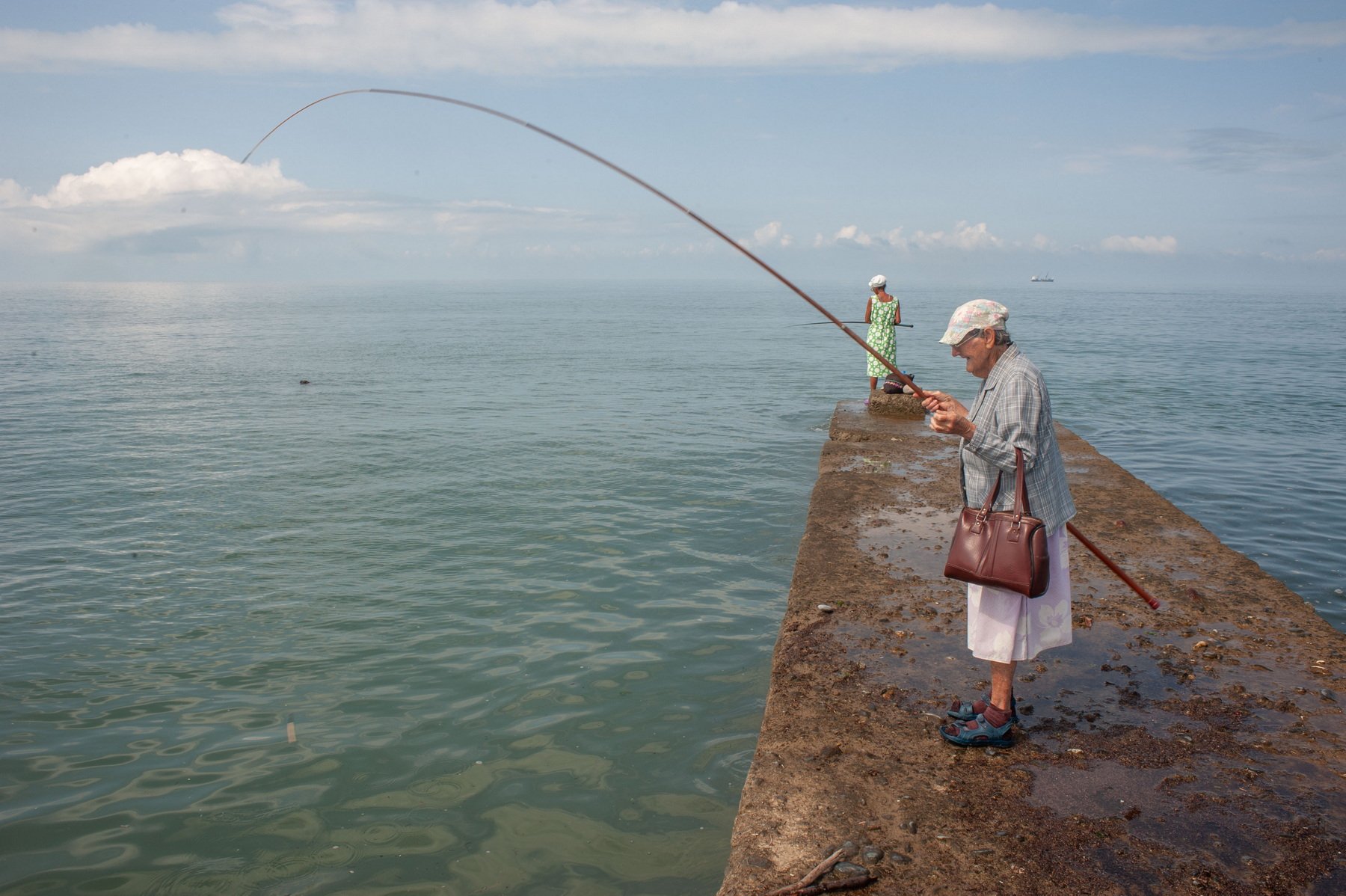
THE BLACK SEA
-
Nuclear threats and the specter of World War III are now daily headlines, bringing international attention to a region less known to the wider public. Today, Ukraine’s Black Sea shores, once the country’s most popular tourism destination and part of its cultural identity, have transformed into defense lines in preparation for the bloodiest war Europe has seen since WWII.
The Black Sea lies at the heart of centuries of warfare, revolutions, historical drama, and evolution. This site of authoritarian regimes and young democracies is a melting pot of ethnic minorities and a point of convergence for Europe, Asia, and the Middle East. Its waters, shores, and inland areas have undergone massive transformations as surrounding countries have tried to tame, reshape, and reinforce the coast while exploiting its resources for trade, defense, and tourism.
For generations, people from countries surrounding the sea have worked hard all year with one dream in mind: to spend a holiday on its shores. Its beaches and waters are veritable trophies for the millions who rush to the seaside every summer. Whatever political upheaval these citizens experience at home, this is where they find love, freedom, and memories to treasure. Signs of historical and present conflicts still linger along the Black Sea’s shores: from World War II seafront bunkers turned into beach bars in Romania to sandy beaches shelled in the 1990s in Abkhazia, now packed with Russian tourists in the summer. Here, wrecked ships, parades of naval strength, nationalism, and stray mines floating in the open sea form the background to tourists’ long, sunny days at the beach, in a landscape where leisure, tension, and even war entwine.
2000-2024, Romania, Bulgaria, Turkey, Azerbaijan, Armenia, Georgia, Ukraine, Moldova, Russia
Odessa, Ukraine, 2022
Fishermen, 2 Mai Village, Romania, 2000
Vanea, a fisherman boy is taking a rest. Danube Delta, Romania, 2005
Russian tourists in Abkhazia, Georgia 2013.
Nina and her daughter fishing. Today, Russia is setting up here a naval base for its fleet. Abkhazia, 2010.
Last summer before joining the Army College, Shusha, Nagorno Karabakh, 2010.
Sevastopol, Crimea, 2010
Trabzon, Turkey, 2010
Rize, Turkey 2010
Sukhumi, Abkhazia, 2010
Sukhumi, Abkhazia, 2010
Zatoka, Ukraine, 2010
Zatoka, Ukraine, 2010
Zatoka, Ukraine, 2010
Eforie Nord, Romania, 2006
Russian tourists, termal springs in Kyndyg, Abkhazia
Sukhumi, Abkhazia, 2010
Navy Day, Mangalia, Romania 2024
Russian tourists, Kalej, Russia, 2010
Romanian navy training in open sea, 2022
Navy Day celebrations, Mangalia, Romania, 2016
Navy Day celebrations, Mangalia, Romania, 2016
Navy Day celebrations, Constanta, Romania, 2015
Coal seller, Kars, Turkey, 2010
Gagra, Abkhazia, 2010
Romanian Navy training, Constanta, Romania, 2016
Tourists playing in waves, Costinesti, Romania, 2017
Amasra, Turkey, 2024
Border soldiers, Nagorno Karabah, 2010
Syrian mechanic training onboard of an arrested ship, Constanta, Romania, 2021
Fishermen tea house, Kostamonu, Turkey, 2024
Wedding in Gagauz Republic, Altai, Moldova, 2014
Electronic music festival, Tuzla, Romania, 2017
Navy Day, Mangalia, Romania, 2024
Odessa, Ukraine, 2022
Zatoka, Ukraine, 2022
Costinesti, Romania, 2018
Pitsunda, Abkhazia, 2013





































